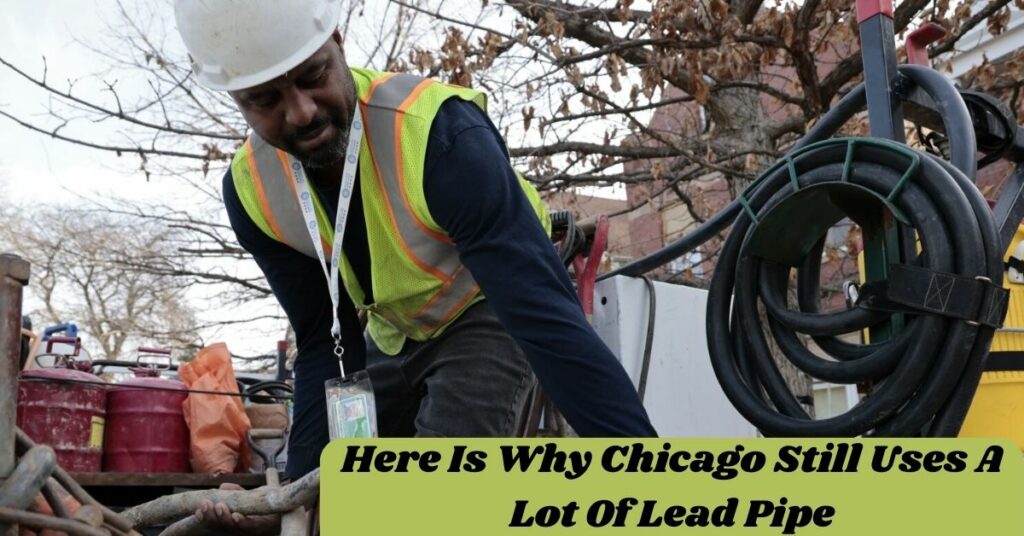Despite the fact that lead in drinking water harms children’s development, the EPA has only required a small number of localities to replace its lead pipes.
Consider Chicago, which has over 400,000 more lead water pipes than any other American city. According to an AP examination of more than 3,500 samples taken using a technique more sensitive than the one used by the federal government, almost 7% of residences that requested sampling last year exceeded regulatory limits, and in at least 73 homes, it was twice as much.
A tweet regarding the replacement of lead pipes in Chicago:
Just passed my second bill out of House Chambers for requiring lead pipe replacement disclosures to our citizens and providing progress updates on the 700,000+ water supply line replacements! #Springfield #Chicago pic.twitter.com/O5ODBdJnLd
— Hoan Huynh (Hahn Win) (@HoanDHuynh) March 24, 2023
However, even with that many houses, the requirement to remove pipes has never been enforced.
This is so that most households, not all, are not allowed to contain harmful levels of lead according to EPA criteria.
Chicago was never compelled to remove its lead pipes, so it left the majority of them in place and relied on water treatment to reduce the lead levels.
They had limited resources that had to be spent elsewhere, according to state and local officials. Furthermore, they claim that local regulations increased the difficulty and cost of removal work.
Main Work In Water
The city started quickly repairing its outdated water mains in 2012. Typically, these are composed of cast iron rather than lead. Only a small section of the lead pipes that branch off and supply certain residences were replaced with copper by road crews when they came across the lead pipes. They left the remainder after repeatedly reburying the connection.
As the city was finishing that project, the Illinois legislature outlawed that tactic.
Chicago allegedly disregarded the harmful consequences of lead in drinking water, according to Miguel Del Toral, a former EPA regulations manager and whistleblower on the Flint, Michigan lead pipe tragedy.
“There was no acknowledgement that there was a problem during the water main replacement program,” he claimed.
Del Toral wasn’t the only one to take issue with what the city was doing. In 2017, two Chicago residents filed a proposed class action, alleging that the city’s work on its water mains raised the danger of lead exposure. Studies were used to support the claim that disrupting lead pipe and leaving it in the ground can actually increase the amount of lead in tap water.
The city started giving out water filters to residents in neighborhoods where public works personnel were repairing mains the next year to protect against the increases. The lawsuit was ultimately thrown out.
You can also have access of current news and updates by clicking the links below:
- What is the Average Cost of a Road Trip Charging an Electric Vehicle?
- California Plane Crash: 6 People Die in Cessna Plane Crash in California on Saturday Morning
The Official View Of Chicago
According to the EPA, replacing lead pipes when working on water mains is not only safer, but also around 20% less expensive.
However, according to Andrea Cheng, commissioner of water management for Chicago, this is untrue there. Up until this year, state regulations there demanded pricey construction techniques. According to her, the city only recently began waiving permit fees, which can increase lead replacement expenses by hundreds of dollars.
According to Cheng, aging water mains might burst, therefore dealing with all the lead pipes would have been negligent and risked exposing people to bacteria. She claimed that lead poisoning from lead paint poses a greater risk to Chicago residents, and the city is attempting to combat this.
When residents were coerced into allowing road crews access to private property to remove lead pipes, the city of Detroit found success. In Chicago, there aren’t any regulations like that.
“Do you know how many people want their yards dug up?” said Cheng. “Not too many.”
Most residents have permitted workers on their property to install pipes since the legislature modified the rules, according to her.
As of late, Chicago has begun replacing lead pipes when they break, which happens frequently in a city with harsh winters. The program is restricted and free for low-income houses and daycares. However, the city estimates that replacing them all will take decades. The public will still be exposed.
The vast majority of lead pipe is still buried nationwide, not just in Chicago, three decades after the federal government set lead limits for drinking water.
Cities that were proactive and replaced entire lengths of lead pipe are in better health, according to Marc Edwards, a water treatment specialist at Virginia Tech.
You’re conclusively resolving the issue, he remarked. Doing everything at once is significantly more cost-effective than letting the homeowner ignore the issue and then finding out 30 years later that their children have been exposed to lead poisoning.
If You Liked Our Content, Please Follow us on Twitter (@CaliforniaExam1) to stay updated about celebrities and their lifestyles.
